Writing a book is hard, but marketing a book is even harder.
The strongest tool in a writer’s marketing caboodle is social media. Unfortunately. Social media is so hit-or-miss with constantly changing formats and ever-evolving algorithms. If you’re at a total loss for what you’re even supposed to post, you’re not alone! Most authors have NO idea how to garner interest for their books online.
So how do we even use social media?
Which social platforms should an author use?
The social platform an author chooses to promote their books depends on factors like:
- target demographic
- genre
- personal preference
- existing audience
Popular choices for writers include TikTok, Instagram, Facebook, Pinterest, and Twitter.
It’s typically more manageable to target one or two platforms to cultivate, rather than spreading yourself too thin across every available venue.
Here are some questions to ask yourself to determine which platform(s) to focus your marketing efforts on:
- Who is your ideal reader? Teenagers? New mothers? Business owners?
- Where does that ideal reader congregate online? This one may take some research to answer.
- Do you already have a following on a particular platform? It might be worth building upon where you already have a foundation.
- Do you have a preference? Often, strategizing where is “best” to host your platform is less important than strategizing for what you will enjoy. If you enjoy making a certain type of content, opt for the platform that is best suited for it–the more fun you’re having, the easier it will be to stay consistent. Love making short videos? TikTok and Instagram. Love making longform videos? YouTube. Want to keep your face out of it entirely and just share your wit and observations? Twitter.
Writers tend to huddle up in their own little corners of the internet, but most platforms feature some sort of image sharing capability, so let me share a few ideas for visuals and graphics you can use to engage with readers.
What should authors post on social media?
Authors should post content that promotes themselves and their books to their target demographic. This might include things like book excerpts, promo images, and questions to engage with your readers.
The actual content you post completely depends on your audience, brand, and genre. However. I’ve got twelve types of book promotion post ideas you can make on social platforms like Facebook, Twitter, and Instagram.
The examples I’m going to use are mostly ones I made on Canva. Canva is a great resource, because it’s easy and accessible, and the free version gets you access to most features.
Social media post ideas for writers [EXAMPLES]
Here are some uber-specific posts for Twitter, Facebook, and Instagram, for my writers who have absolutely no clue where to start.
1. Review highlights
Review highlights are a wonderful way to pump up your book without having to brag on yourself. If you employ ARC readers, you can use their early reviews for promo during your presale period. Once your book has been out and gathered a few more reviews, you might drop in a few new ones every now and again.
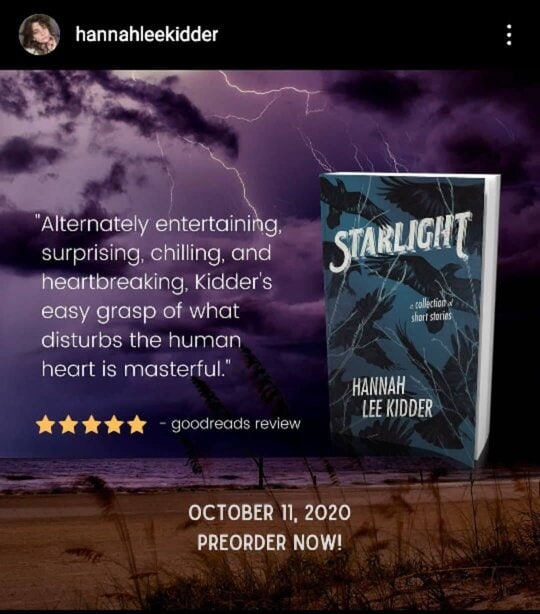
TIP: Be careful! Getting in the trenches of your own reviews can get a bit nasty. A good tip is to filter to only the five-star reviews and pretend the others don’t exist.
2. Quotes from your book
You can make these before, during, and after your book release, so this is a solid format. Grab a saucy quote from your book and toss it onto some thematic-looking scenery. You can include your cover, if you’ve already done the cover reveal. Here are some examples I made leading up to the Starlight release:
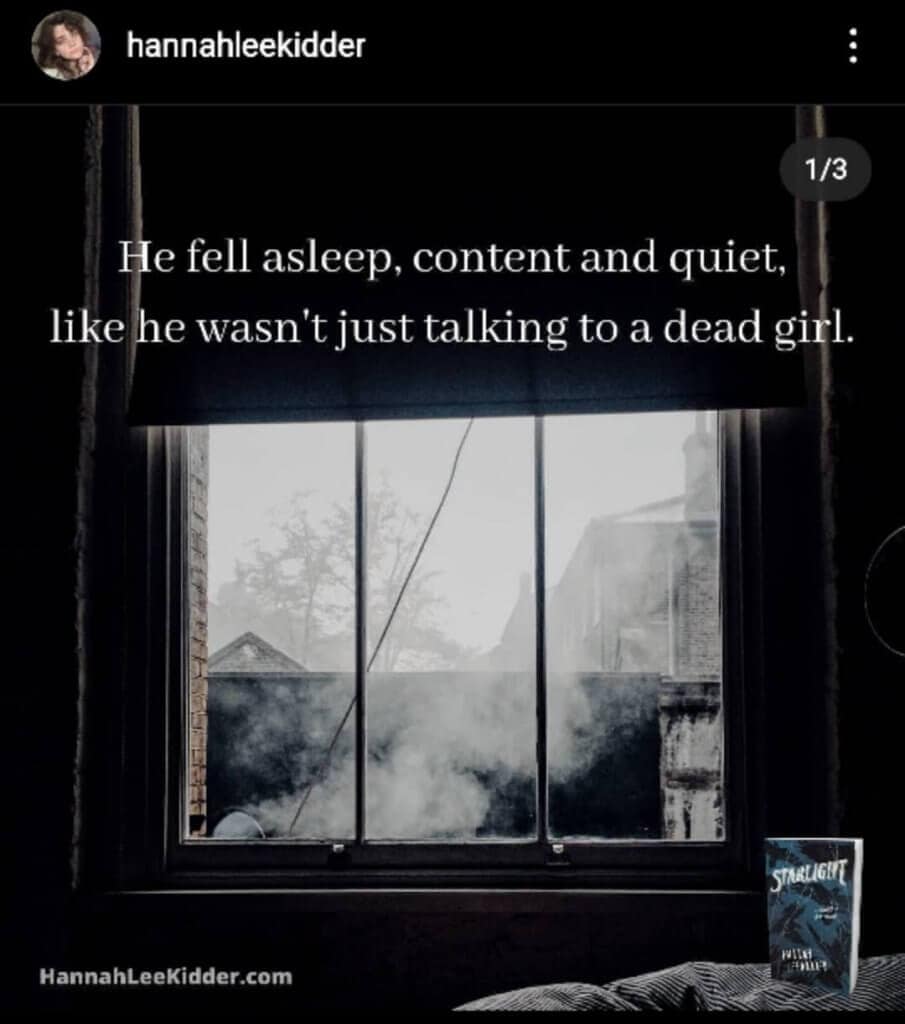

TIP: You could include a request for your beta readers and/or ARC reviewers to keep a list of their favorite lines as they read your book. That’s a great way to choose the most impactful quotes to share!
3. Lists of elements your book contains
Create a graphic with your book cover and a list of elements from the book, such as tropes, genres and subgenres, character archetypes, themes, and so on. This is huge on Twitter.

4. Aesthetics and collages
I’ll be honest, a lot of readers do not care about these. If you think collages and aesthetics are fun to make, they could be something to do for inspiration or while you’re taking a writing break. You can post these during the drafting process to get people familiar with your book and the vibes. It’s also, from what I’ve seen, a good way to connect with other writers (because writers are the only people who care about aesthetic boards).
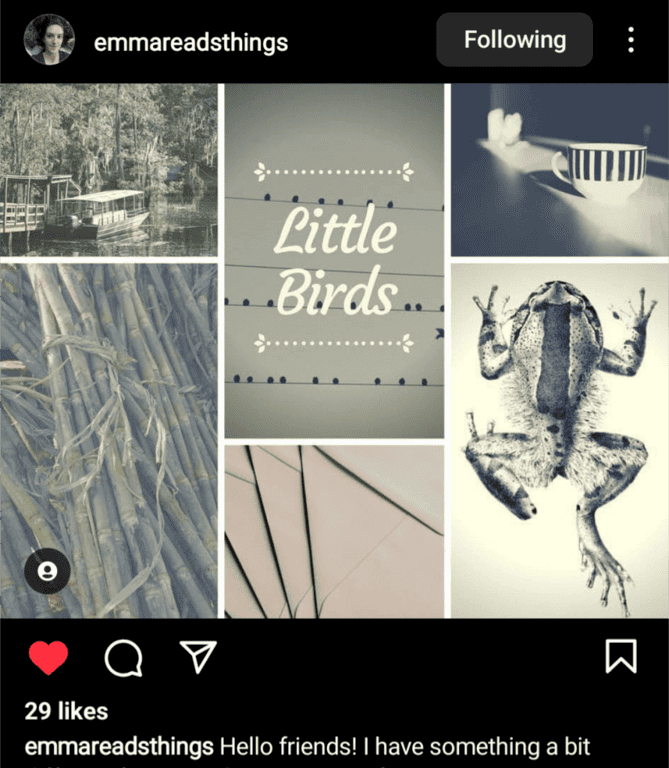
TIP: Try to utilize things you’re already doing as social media content. If you make character aesthetics for your own use, share them! If you have a thematic writing playlist, share it! If you’re already creating the piece, you may as well double-dip and use it to fill your social feeds.
5. Another list of elements about your book but with swirly arrows
This one’s a big crowd pleaser. I haven’t seen as many direct sales from marketing images as I have with this one.
So again, this is literally just a list of subgenres, tropes, and elements that might entice your target demographic. It’s good to list things that are popular in your genre right now, and maybe something trendy and topical.

TIP: Research your genre to see what tropes are trendy right now. Be sure to include those!
BONUS TIP: You can remake these as trends change. If one of your tropes wasn’t popular at the time of release, but suddenly has an uptick in interest, that’s a great opportunity to shift your marketing to appeal to that trend. (Be sure your book actually fulfills that trope, obviously).
6. Seasonal posts
AKA slap a Santa hat on that bitch. After your book is released and the novelty has worn off, it’s still good to continually promote it to keep sales rolling. Seasonal posts are great for this.
If you published a romance novel, February’s gonna be a hopping time for you. Run November and December campaigns if you want to promote your books for gift ideas. You should also look at things like your book’s release anniversary and other special occasions.
Make a big deal about the audiobook or other formats dropping. Basically make an event of whatever you can, because that makes your promo have a “purpose” or a message other than “hey please buy my book,” which is what most of them will be.

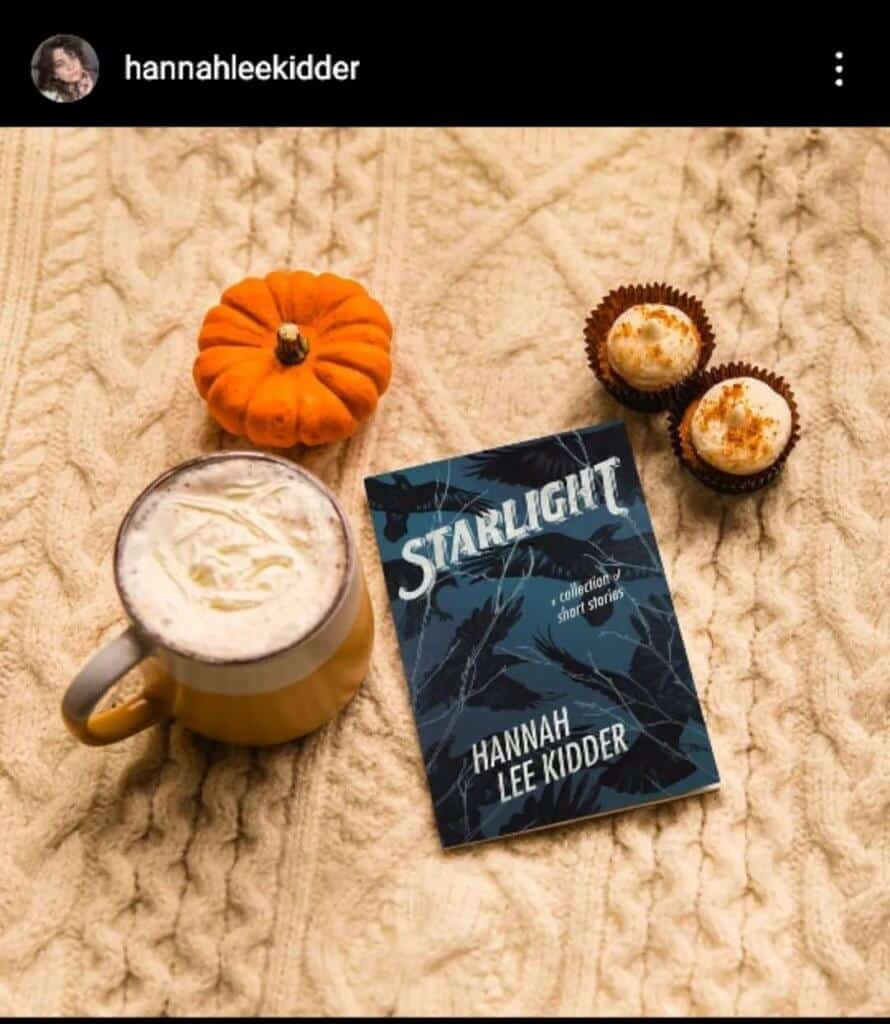
7. Take your book on a field trip
There are lots of templates that let you drop your book into a little 3D render in an environment, like with BookBrush, but it does hit different if your book is actually outside somewhere. During preorder periods, I keep a copy of the book in my glove compartment just in case I drive past something pretty and want to stop and get a picture.

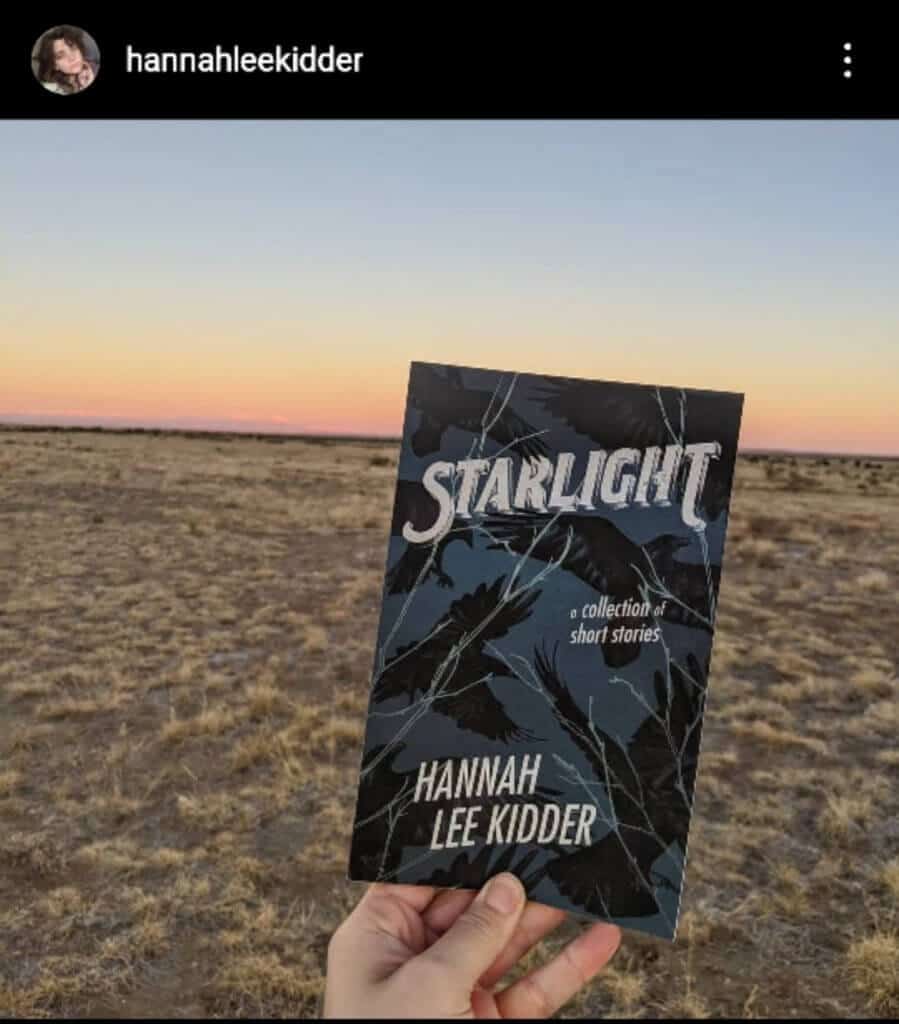
TIP: Sometimes readers will send you pictures like this. Ask permission and give credit when you repost on your socials. This is great for several reasons: Someone cared enough about your book to take a cute picture of it, you have some effortless content, other people will see that someone cared enough about your book to take a cute picture of it, and you can give that reader a little extra exposure from your audience.
8. Cover reveals
Cover reveals are quite the event for book launches. If you’re not making a big deal out of your cover reveal, you’re missing an opportunity. Books are great, but let’s be honest: They’re not particularly exciting to promote. The cover reveal is one of few times you can cook up some intrigue.
You can even stretch it out into several posts instead of one by posting teasers. BookBrush is good for 3D renders, but you can also make your own. So drop some teasers, do a countdown to your cover reveal, then your reveal post with all the drama and flair you can muster.
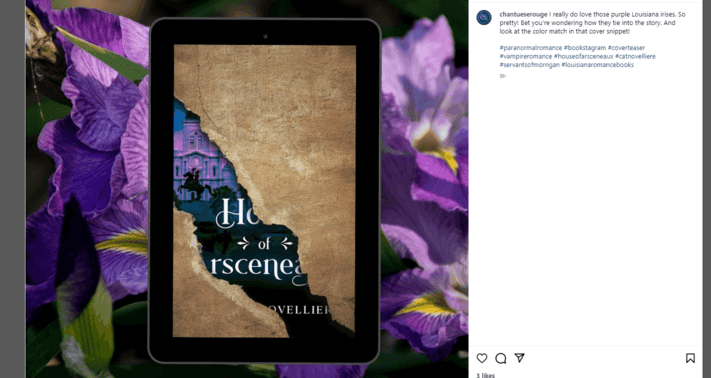
TIP: Drop cover reveals early, either in your newsletter, on Patreon, or however else you separate your readers from your Super Readers. Post about it for one more post idea, plus incentive for people to subscribe to your newsletter to get early access themselves.
11. Bonus book matter
You can typically curate extra content around your book. This might be things you actually include in the book itself, like a map or a lexicon. Or it could be something like a character portrait.


Whatever creative thing you can think of that might make people feel attached to your book is always a good idea for posts!
10. Behind-the-scenes content
Behind-the-scenes content is great to post before your book release. You can update your audience on what step of the process you’re in, share your wins and losses, and kind of take them along on the journey. After your book drops, you can make fun posts about the process without worrying so much about spoilers.
For example, on one of my pen names, I design my own covers. After the book drops, I’ll make a post showing the very first cover I designed next to the final one. These posts often get a high level engagement, which means people find it interesting. Sharing something that visual (like a side-by-side comparison) will catch interest better than a text post vagueing about your process, so try to post something tangible whenever possible.
Anything you can share about your process will likely be good content.
TIP: Take this a step further and literally involve your readers in the writing process. Lots of authors do writing/productivity streams where they do writing sprints with their audience. Whether you let them actually read what you’re writing or not, it can make your readers feel more involved and invested.
11. Giveaway posts
Giveaways make for good posts because everyone loves gifts! You might create a gift box of your book and a few other goodies, so you can take aesthetic photos of the giveaway collection to post.
Giveaways are a good move for getting a small follower boost, plus giving a little something back to the people supporting your platform.
TIP: If you’re hosting a giveaway that requires people to follow your account to enter, be sure to have some interesting content prepped to post, because a lot of users will unfollow after the giveaway ends. You’ve got a small window to genuinely win them over into your audience, so hop on it!
BONUS TIP: Check up on the regulations for giveaways in your region and platform. Things like gambling laws in certain places might put restrictions on exactly how you can offer free items, so do some research to ensure you’re operating within the rules.
12. Make compilations of related books
A rising tide lifts all boats, right? Well, a good book lifts its whole genre, too. Leading up to your book release (and after it), you can make compilation posts of your favorite books by other authors in your genre.
This might be an ongoing series of posts, or just a standalone, but recommending other books gives you an opportunity to connect with other authors in your genre, as well as giving them a potential boost in sales. They get sales, you get friends, your readers get new book recommendations. It’s wins all-around.
TIP: You can make this collaborative by reaching out to authors ahead of time and pitching a social media post swap or a newsletter feature for each other’s books, because if your audience liked your book, they’ll probably like another author with similar content. Readers will always want more books, so there’s no reason to be competitive with your fellow author. Lift each other up!
I hope this list gave you lots of new ideas for promoting your books! A lot of the time, digital marketing just comes down to trial and error, so don’t be afraid to experiment with different types and formats of content and see what works the best for you and your audience.
Happy writing!